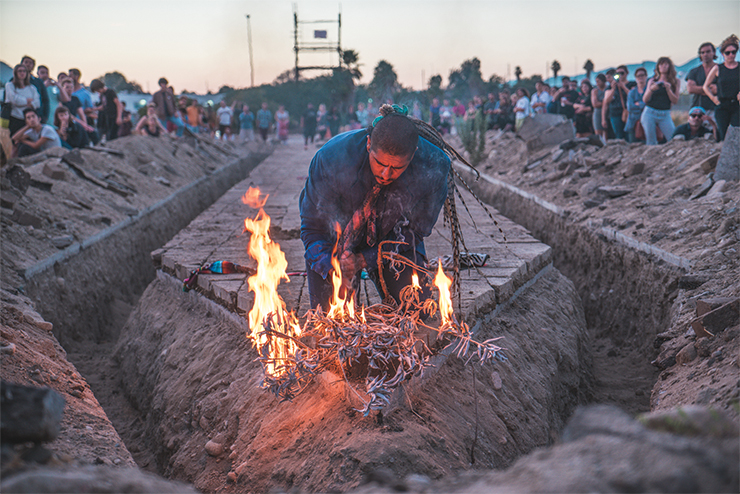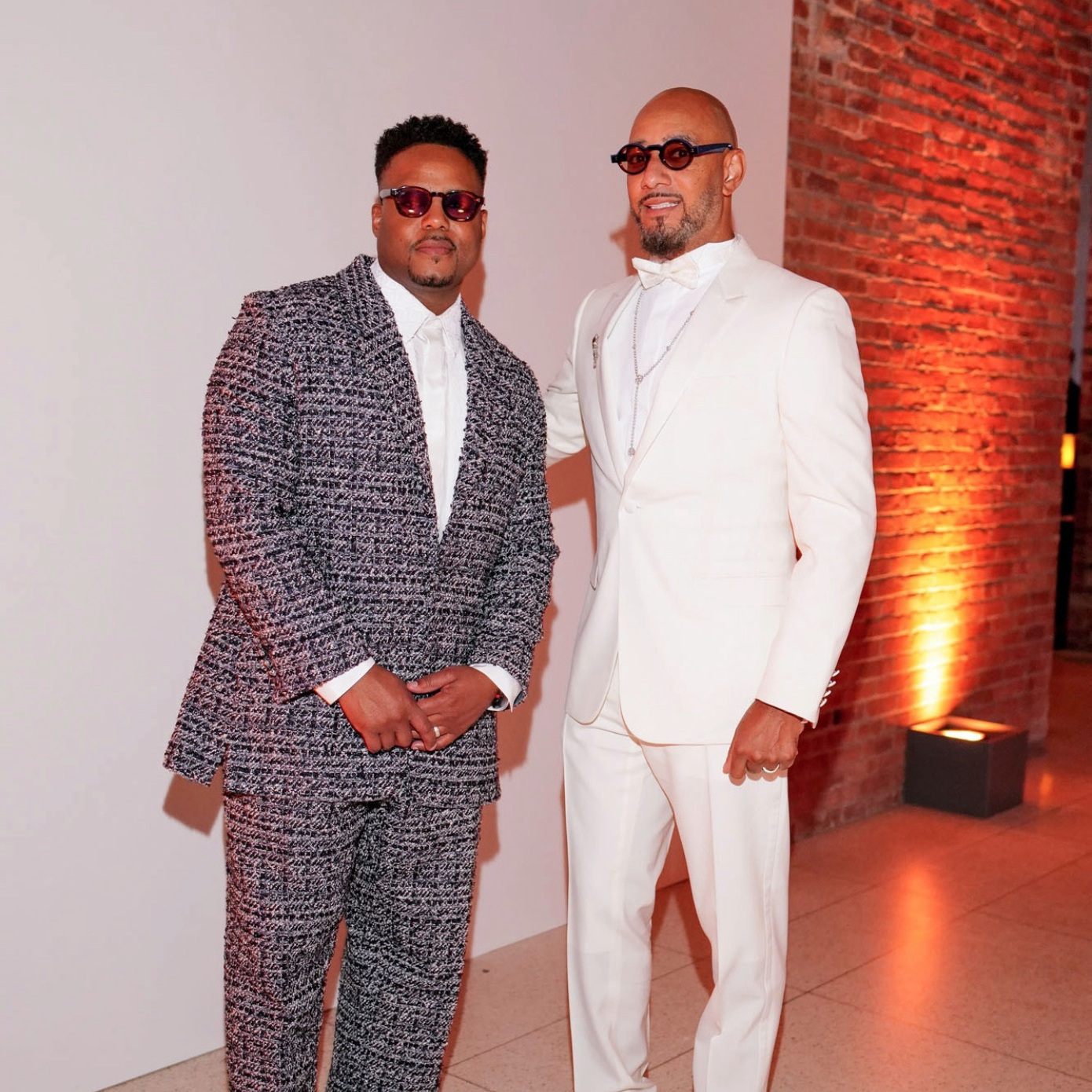
True to his father’s process, Rafa Esparza makes bricks by hand—a craft he believes is dying. He kneads mounds of loamy soil with water, straw, and horse manure with his feet; then loads the muddy batter into wheelbarrows to pour into rows of rectangular wooden molds.
“It’s back-breaking work,” says the 35-year-old artist, who, in preparation for the Whitney Biennial in March, is in the process of making 5,000 slabs for his upcoming installation.
Esparza, who was born and raised in Los Angeles, learned how to make bricks from his Mexican father, who had built his first home, in Durango, out of adobe blocks. Since being taught in 2012, brick has become a potent medium for Esparza—one that imbues his personal history, heritage, and racial identity.
“I wanted to develop a practice that could be legible and accessible outside of an institution, and could be firmly grounded in the land,” he says. In addition to earthen materials, Esparza’s practice also employs his own body. Having studied the iconography of indigenous tribes across the Americas while at U.C.L.A., he often blends Native rituals in his art installations, performing them in narratives that often touch on his experiences of being a gay man.
Far outside the sterility of the white cube space of a museum gallery, Esparza typically performs his artistic visions on sites that are tinctured by dark cultural tones, which happen to abound in the Valley. In the spring of 2015, for example, he encased himself in a concrete column within the purview of the L.A. County Jail, an institution with a history of imprisoning many queer people. Slowly but surely Esparaza set himself free with a chisel and a hammer.
As a result of his visceral performances, Esparza was invited to participate in “Made in L.A.,” the 2016 Hammer Museum biennial. However, he was reticent to say yes.
“That took me by surprise,” says LAXART director Hamza Walker, who co-curated the biennial with Aram Moshayedi. “But he inserts so much of himself, his identity, and his body into his works that he’s not just going to give them to somebody.” When Esparza ultimately agreed to participate, he created a performative dialogue around an act of physical labor: Digging.

In Elysian Park, where an entire Mexican-American community was once displaced to build Dodgers Stadium, he buried a suite of objects for Walker and Moshayedi, alongside a few artist peers, to unearth.
“They were symbols, talismanic relics relating to the neighborhood where he came from,” said Walker, who had unearthed a bullet-punctured mailbox from Esparza’s childhood home. Moshayedi unearthed an armchair with a cactus bursting from its seat, which became the centerpiece of the visually arresting “Tierra,” a floor of adobe bricks that covered 1,200 square feet of the Hammer Museum’s mezzanine level.
Today, in the driveway of fellow artist Molly Larkey’s Frogtown, L.A. studio (to date, he’s never had his own), Esparza is preparing to transport the quinque milia adobe bricks, made from the soil of his famous California hometown, to New York City.
Inside the Whitney Museum’s gallery, they’ll take the shape of a rotunda, where he’ll exhibit the work of fellow L.A. Chicano and Latino artists, including Ramiro Gomez, Jr., Beatriz Cortez and Nao Bustamante. His inclusion of his peers within his installation piece is a gesture that speaks to his devotion to community.
“Rafa’s work comes from such a generous place of engagement and connection,” says Whitney Biennial co-curator Christopher Y. Lew. “With this sense of divisiveness that we read about and experience at local, national, and international levels, his is a spirit that feels urgent right now, a positive counter to those unruly forces.”



